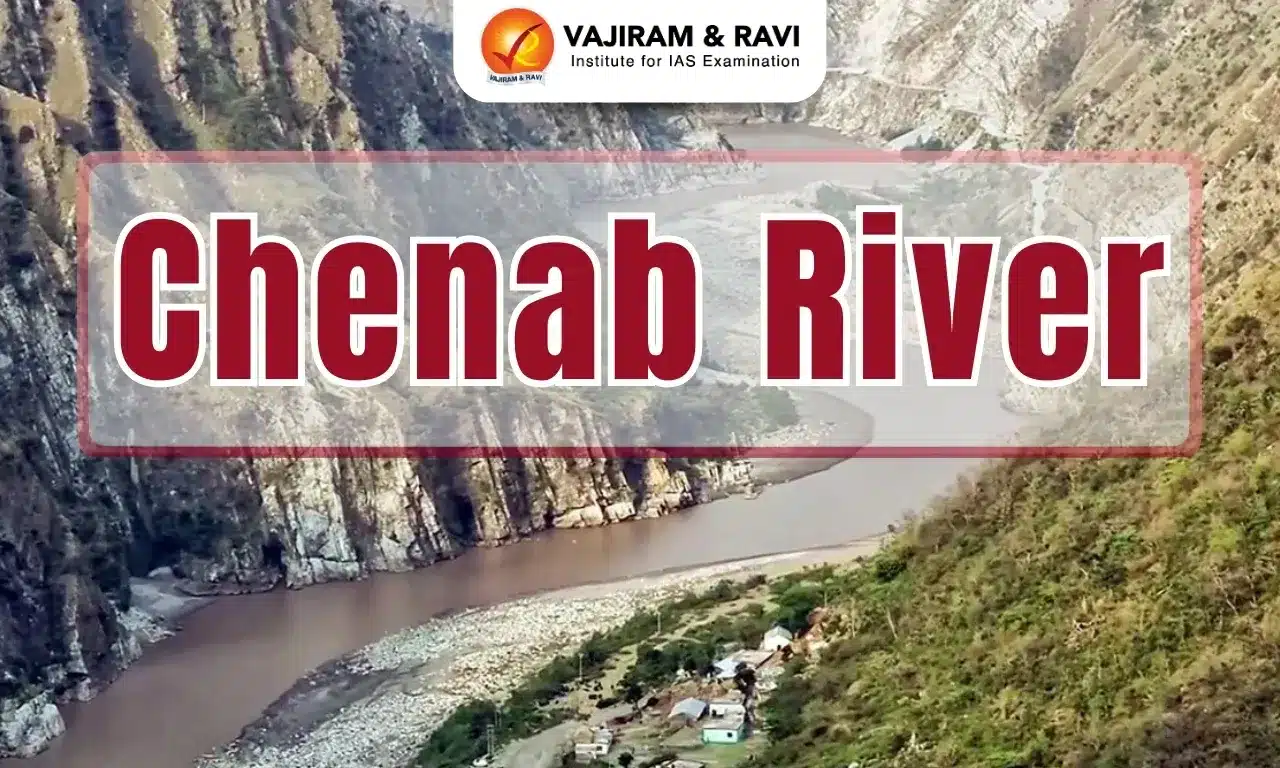Chenab River Latest News
Recently, the stalled Sawalkote dam on the Chenab river is back at the centre of India’s strategy to tap the river’s hydropower potential.
About Chenab River
- It is a tributary of the Indus River.
- Origin: It is formed by the confluence of two streams, Chandra and Bhaga, in the Lahaul and Spiti Districts of Himachal Pradesh.
- In its upper reaches, it is also known as the Chandrabhaga.
- It flows through Jammu and Kashmir union territory, Himachal Pradesh and after receiving the Jhelum River near Trimmu, the Chenab empties into the Sutlej River.
- Major Tributaries:
- Left Bank: Niru, Tawi, Neeru, and Liddrari
- Right Bank: Ans, Bhut Nalla, Bichleri, Kalnai Marusudar and Miyar Nalla.
- Major Dams on Chenab River: Salal (rockfill dam), Aalal (concrete dam), Baglihar, and Dul.
- The waters of the Chenab are shared by India and Pakistan as per the terms of the Indus Water Treaty.
What is the Indus Waters Treaty (IWT)?
- It was signed in 1960 between India and Pakistan, with the World Bank acting as a mediator.
- The treaty outlines water usage rights over six rivers of the Indus River System, categorizing them into Eastern and Western rivers.
- The Eastern rivers—Ravi, Beas, and Sutlej—are allocated for India’s exclusive and unrestricted use.
- The Western rivers—Indus, Jhelum, and Chenab—are allocated primarily to Pakistan.
Source: IE
Last updated on November, 2025
→ Check out the latest UPSC Syllabus 2026 here.
→ Join Vajiram & Ravi’s Interview Guidance Programme for expert help to crack your final UPSC stage.
→ UPSC Mains Result 2025 is now out.
→ UPSC Notification 2026 is scheduled to be released on January 14, 2026.
→ UPSC Calendar 2026 is released on 15th May, 2025.
→ The UPSC Vacancy 2025 were released 1129, out of which 979 were for UPSC CSE and remaining 150 are for UPSC IFoS.
→ UPSC Prelims 2026 will be conducted on 24th May, 2026 & UPSC Mains 2026 will be conducted on 21st August 2026.
→ The UPSC Selection Process is of 3 stages-Prelims, Mains and Interview.
→ UPSC Result 2024 is released with latest UPSC Marksheet 2024. Check Now!
→ UPSC Prelims Result 2025 is out now for the CSE held on 25 May 2025.
→ UPSC Toppers List 2024 is released now. Shakti Dubey is UPSC AIR 1 2024 Topper.
→ UPSC Prelims Question Paper 2025 and Unofficial Prelims Answer Key 2025 are available now.
→ UPSC Mains Question Paper 2025 is out for Essay, GS 1, 2, 3 & GS 4.
→ UPSC Mains Indian Language Question Paper 2025 is now out.
→ UPSC Mains Optional Question Paper 2025 is now out.
→ Also check Best IAS Coaching in Delhi
Chenab River FAQs
Q1. What is the largest tributary of Chenab River?+
Q2. Chenab River is a tributary of which major river?+
Tags: Chenab River

















